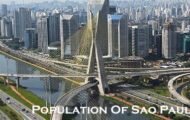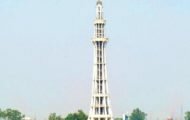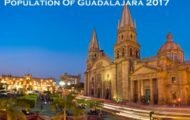Karachi is the largest and most populous city in Pakistan and 7th largest metropolitan city in the world. Karachi is Pakistan’s premier industrial and financial centre and serves as a transport hub, and is home to two of Pakistan’s two largest seaports, the Port of Karachi and Port Bin Qasim, as well as the busiest airport in Pakistan. Karachi collects over one third of Pakistan’s tax revenue and employs up to 70% of the city’s workforce. Karachi is one of Pakistan’s most secular and socially liberal cities. It is also the most linguistically, ethnically, and religiously diverse city in Pakistan. Karachi, the second-largest city in the Muslim world is also considered to be one of the world’s fastest growing cities.

Karachi was known as the “City of Lights” in the 1960s and 1970s for its vibrant nightlife, also Karachi was beset by sharp ethnic, sectarian, and political conflict in the 1980s with the arrival of weaponry from the War in Afghanistan. The city had become well known for its high rates of violent crime, but recorded crimes sharply decreased following a controversial crackdown operation against criminals. Karachi was previously the capital of Pakistan until Islamabad was constructed.
POPULATION OF KARACHI IN 2017:
Talking about population, in order to check out the population of Karachi in 2017, we need to have a look at the population of the past 5 years. They are as per the following:
- 2012 – 15 million
- 2013 – 15.35 million
- 2014 – 15.55 million
- 2015 – 15.8 million
- 2016 – 16 million
The population of Karachi in 2017 is estimated to be 16 million + 0.21 million = 16.21 million. So, the population of Karachi in the year 2017 as per estimated data = 16.21 million.
KARACHI Population 2017 – 16.21 million(Estimated)
In 2016, Karachi has an estimated population of more than 16 million people, which makes it the 7th largest urban agglomeration and the largest city in the Muslim world. The estimated population of Karachi in 2017 would be 16.21 million.
Karachi has grown rapidly in the last few decades and the metropolitan area has more than 23 million people, with a population density of over 24,000 people per square kilometer, or 63,000 per square mile.
The population and demographic distribution of Karachi has undergone numerous changes over the past 150 years. On 14 August 1947, when it became the capital city of Pakistan, its population was about 450,000 inhabitants and was capital of Sindh province.
However, the population rapidly grew with large migrations of Muslim refugees after independence in 1947. Immediately following independence of Pakistan, the city’s population increased dramatically with the arrival of hundreds of thousands of Muslim refugees from India. The city experienced rapid economic growth following independence, attracting migrants from throughout Pakistan and South Asia, with the city hosting over 1 million Bangladeshi migrants, 1 million Afghans, and up to 400,000 Rohingyas from Myanmar. By 1951, the city population had crossed one million mark. In the following decade, the rate of growth of Karachi was over 80 percent. Today, the city has grown 60 times its size in 1947 when it became the country’s first capital. Although, Islamabad remains the nation’s capital since the 1960s, the city’s population continues to grow at about 5% per annum, largely thanks to its strong economic base.
This huge population makes Karachi far denser than any other “megacity” with an urban population of more than 10 million except Dhaka, Bangladesh and Mumbai. This makes Karachi the largest city in Pakistan.
In the next 15 years, Karachi will be the seventh most populous city of the world, forecasts a new Asian Development Bank (ADB) report, highlighting the urgency for making strategies to manage resources and build infrastructure for transforming the country’s commercial hub into an engine of growth.
Karachi’s population will increase by 50% in the next 15 years to 24.84 million, according to “Key Indicators for Asia and the Pacific 2015” report of the ADB. The statistics put the current total population of the country’s largest metropolitan city at 16.62 million, making it the 12th most populous city.
DEMOGRAPHY OF KARACHI:
Karachi’s inhabitants, locally known as Karachiites, are composed of ethno-linguistic groups from all parts of Pakistan.
Karachi has been home to a large number of Gujarati Muslims, who were very early settlers to the area and form a majority in Saddar Town. Large Gujarati Muslim communities in Karachi are the Chhipa, Ghanchi, Memon, Khoja, Bohra and Tai. There are about 10 million Bengali and Biharis from Bangladesh as well. Karachi has 1-2 million ethnic Bengalis from Bangladesh, most of whom came during the 1980s and 1990s. There are also many Rohingya Muslim refugees from Burma and Asian refugees from Uganda. Many refugees from Iran and Central Asian countries have settled in Karachi, as well as a large number of Arabs, Filipinos and Sinhalese from Sri Lanka.
The second largest ethnic group are the Pashtuns, originally from Afghanistan and Balochistan, who have been in the city for decades. Karachi has the largest concentration of urban Pakhtun in the world, including 50,000 registered Afghan refugees, making up 25% of the city’s population.
Karachi also has a large number of Western expatriates, including Polish, American and British expatriates.
It is believed that about 90% of Karachi’s population are migrants from many backgrounds. Muhajirs are the largest ethnic group, accounting for 50% of the population.
POPULATION DESITY AND GROWTH RATE IN KARACHI:
Karachi has a population density estimated at more than 6,000 people per square kilometre (15,500 per square mile)
Karachi is growing at a rate of around 5% per year, in large part to due rural to urban migration in the area and the 45,000 migrant workers who come to Karachi every month from around Pakistan.
Karachi’s population is now growing much faster than projected. Between 1998 and 2011, Karachi’s metropolitan area grew from 9.8 to 21.2 million, an increase of 115%. This is by far the fastest growth of any metropolitan region in the world. This rapid growth is expected to make the city of Karachi the seventh largest in the world by 2030.
The latest updates from UN reports projects that Karachi’s 2016 population is now estimated at 17,121,000. In 1950, the population of Karachi was 1,055,000. Karachi has grown by 503,000 in the last year, which represents a 3.00% change.
FACTS ABOUT KARACHI:
1. According to global human resources company Mercer, Karachi is one of the most inexpensive cities to live in -as well as the most fun!
2. All the major media television channels of Pakistan are headquartered in the city making it the electronic media capital of the country.
3. Karachi has more Pashtu speakers than Peshawar itself.
4. The city’ is a shopper’s paradise and has everything for everyone.
5. Karachi generates around 35% of Pakistan’s revenue.
Find Latest Karachi Population in 2018



